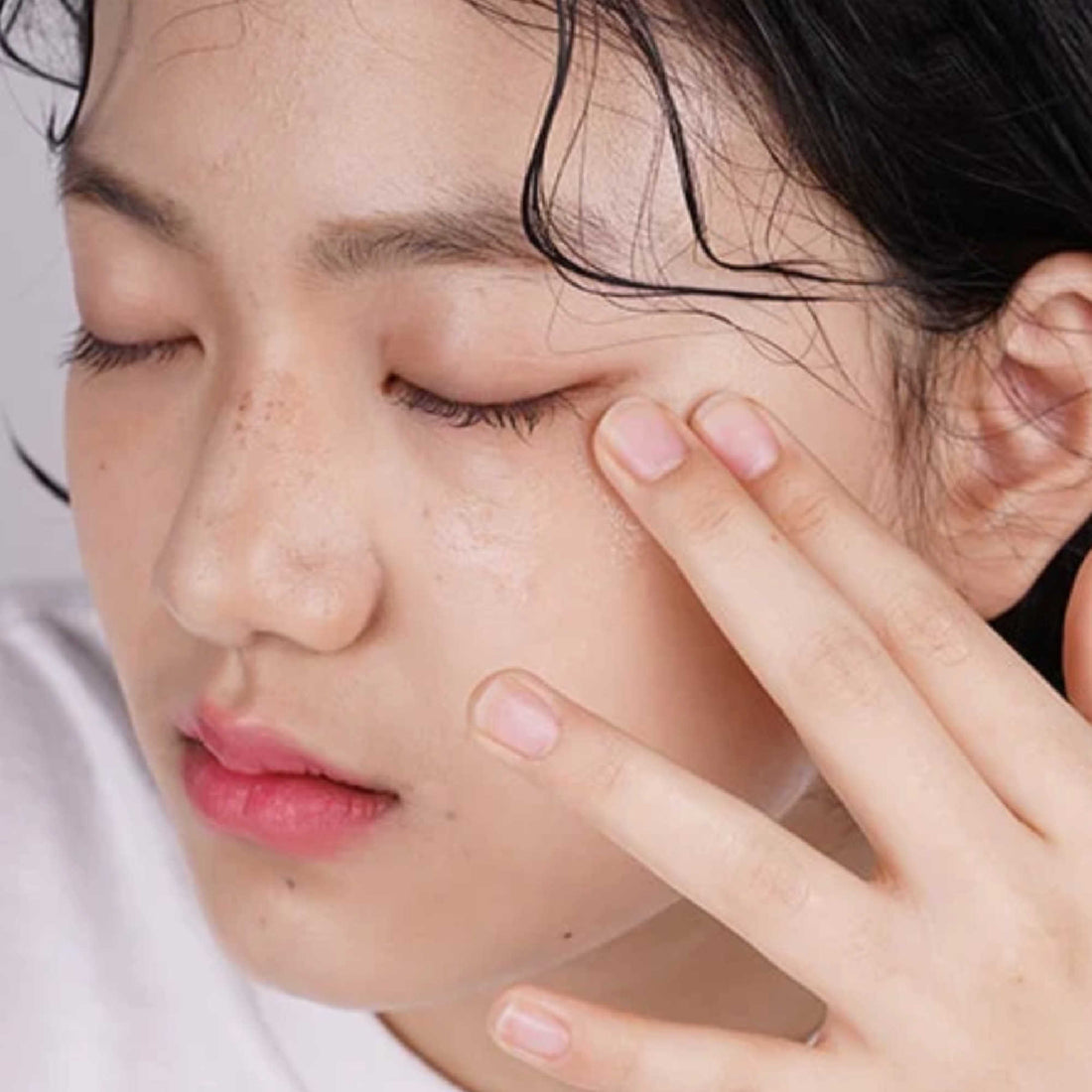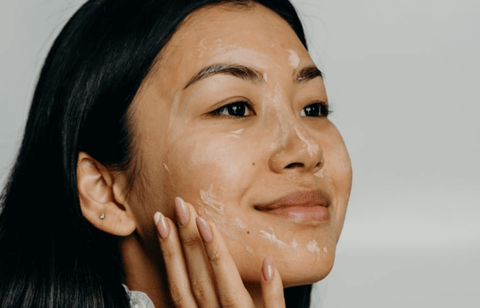
Combination Skin 101: Routines, Products, Tips, & More
Share
When attempting to develop a solid skincare routine for your skin type, it often seems that those with dry or oily skin are most blessed with straightforward solutions. Too patchy? Use moisturiser. Too greasy? Use blotting papers and mattifying makeup. But what if you have a bit of both?
Despite popular opinion, combination skin is extremely common. And even those who believe that dry or oily skin may actually have a combination of both. So, how do you manage it?
Combination skincare doesn’t have to be a complicated process. With the right products and routines, you can have your skin looking (and feeling) its best at all times. So, continue reading to learn more about how to properly care for your combination skin.

What Is Combination Skin?
Before we dive into the details of combination skincare, it’s essential to define and understand it. Simply put, combination skin is, as the name suggests, a mix of oily and dry areas.
Common Characteristics
- If your T-zone (forehead, chin, and nose) appears shiny and moist to the touch, but your cheeks and the perimeter of your face feel tight and flaky, you can trust you have combination skin.
- If your skin type frequently changes with the weather (Dry in winter and oily in summer.)
- Your oily patches may feature larger pores due to the excess sebum that accumulates and enlarges your pores.
- Blackheads and whiteheads occur when oil becomes trapped in your pores (a strong indicator of combination skin).
- For those with combination skin, experiencing breakouts and dry patches at the same time is a common occurrence.
What Causes Combination Skin?
It should be no surprise that many factors contribute to your skin type. Some common culprits include:
Genetics
If you’re looking for the primary reason behind your fickle complexion, you can likely attribute it to your parents. Genetics play a central role in determining your skin type and the size of your sebaceous glands, which are responsible for producing oil.
Hormones
Fluctuating hormones are another factor to consider. For those experiencing high-stress levels, pregnancy, or menopause, you may notice your skin working overtime trying to regulate itself, resulting in excessive oil in some areas and dry patches in others. Additionally, once women have reached menopause, they produce much less oil, leaving dryer skin.
Environment
Your skin encounters numerous environmental assaults on a daily basis, exacerbating combination skin. For example, cold weather is notorious for drying out your skin, so you may find more patches of flaky, tight skin. Conversely, warm weather will cause your skin to sweat and increase oil production as a result.
Products
Fortunately, there are some contributing factors you do have some control over, most notably, the products you choose. For example, if you’re treating your breakouts with harsh formulas or irritants, you may find that your skin reacts by producing more oil or, alternatively, exacerbating dryness and inflammation.
Recommended Skincare Routine for Combination Skin
While no one’s skin is exactly the same, there are basic rules that those with combination skin should consider following. So, we’ve outlined a recommended routine to help you best manage your complexion daily.
Step One: Cleanse
Cleansing is essential for removing dirt, grime, and excess oil that clogs your pores. You’ll want to use a cleanser with a gentle formula (no harsh chemicals here!) that doesn’t have a high pH to avoid stripping your facial oils. Wash your face with lukewarm water every morning and night. Try the TSOK Facial Cleansing Gel.
Step Two: Tone
Next, balance your complexion twice daily with an alcohol-free toner that gently hydrates and exfoliates your dry and oily areas. As someone with combination skin, you should make it a point to listen to what your skin is trying to tell you: hydrate dryness and manage oil. Try the TSOK Perfect Toning Mist.
Additionally, try to find a formula packed with antioxidants, including vitamins E and C, to protect your skin from environmental pollutants. Try the TSOK Vitamin C Serum.
Step Three: Exfoliate
Exfoliating is an excellent way to unclog your pores and prevent blemishes from forming. Choose a glycolic acid-based exfoliator after toning to lift dead skin cells and flakiness. If your skin is on the oilier side, try using a physical or light chemical exfoliator. Alternatively, if your experience extreme dryness, opt for an exfoliator with a gentle scrubbing texture to buff and brighten your complexion.
Step Four: Moisturise
Moisturising is another step you don’t want to skip. Use a lightweight formula in the morning and evening after toning. If you notice your skin is extra patchy, feel free to use a heavy-duty moisturiser in the evening to help restore hydration while you sleep. Products with hyaluronic acid are a must, as they help your skin retain moisture. Try the TSOK Balancing Moisturiser and Hyaluronic Acid Serum.
Step Five: Sunscreen (Morning)
SPF is critical for any skin type, as it protects your skin from the sun’s harmful rays, preventing premature signs of aging, such as fine lines and wrinkles. Be sure to apply a generous amount every morning, in rain or shine, before heading out the door.
Step Six: Face Oil (Evening)
Incorporate a face oil into your evening skincare routine to further balance and hydrate your skin. Whether you use it on its own or combine it with your moisturiser, the result is a soft, supple complexion that appears radiant and healthy.
Makeup Product Tips
If you’re a makeup wearer, it’s important to know what types of products will enhance your complexion rather than exacerbate it.
It’s best to stick to lightweight formulas that won’t seep into your pores. Opt for oil-free or mineral-based foundations to provide a matte finish. You can also prep with a mattifying primer to further prevent excess oil production from melting your makeup.
Blotting papers are also a lifesaver for moments when you can’t touch up your makeup with powder. Keep a packet on hand to grab on the go.
Dealing with combination skin, while seemingly challenging, doesn’t have to be as complicated as you believe. Simply nourish and listen to your skin. Before you know it, you’ll be rewarded with a glowing complexion that boosts your confidence.
